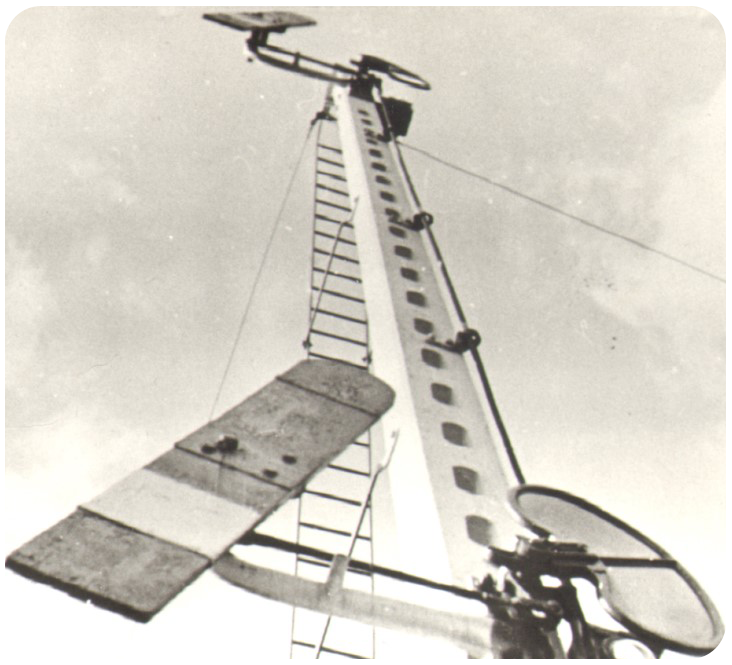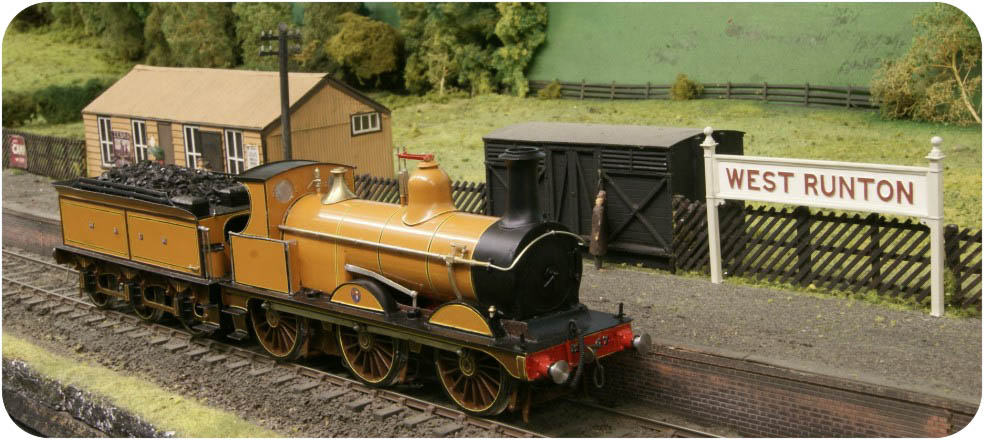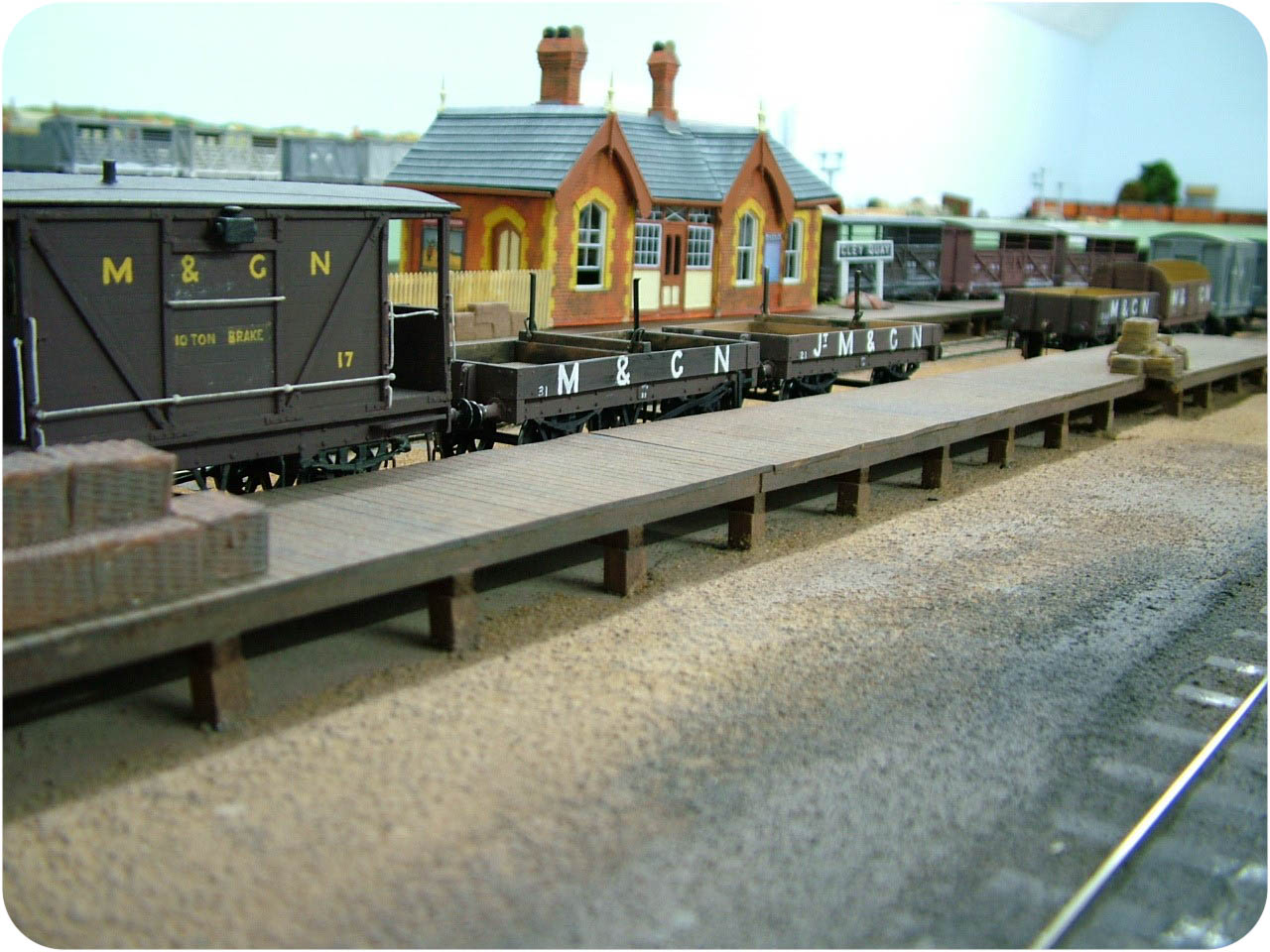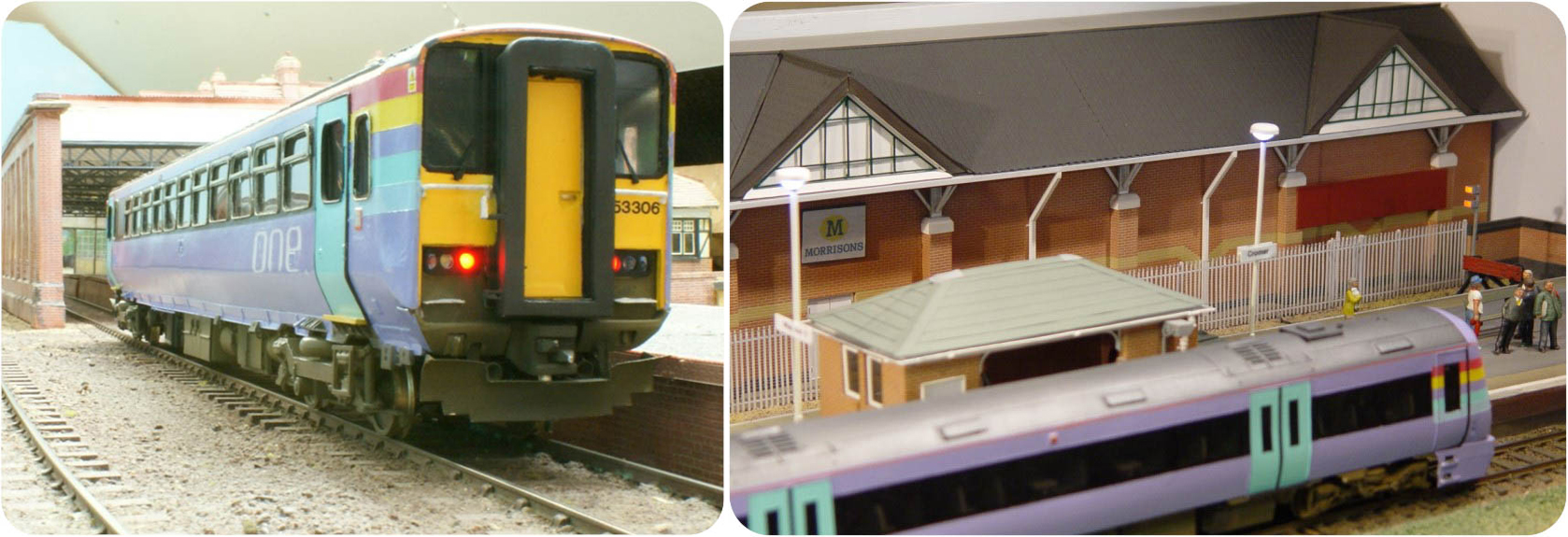The M&GN Joint Railway History
The line was sometimes known by the undeserved title of 'Muddle and Go Nowhere' but in reality it was far from that. Its stations were often referred to as the 'Midland' reflecting its connections with the Midland Railway and the Midlands.
It was a secondary line, jointly owned by the two railway companies named in its title, later by the L.M.S. and L.N.E.R. and survived mainly on the castoffs of its parents. The line grew from a collection of small local undertakings such as the Great Yarmouth and Stalham Light Railway, The Lynn and Fakenham Railway, Spalding and Bourne Railway and the Bourn and Lynn Joint into a through line linking the Midlands with the East Coast administered by a committee drawn from the Midland and the Great Northern Railways. This Joint Committee was formed in 1893 and continued to administer the line until nationalisation in 1948. The Committee also administered the lines of the Norfolk and Suffolk Joint Railways Committee, jointly with the Great Eastern Railway.
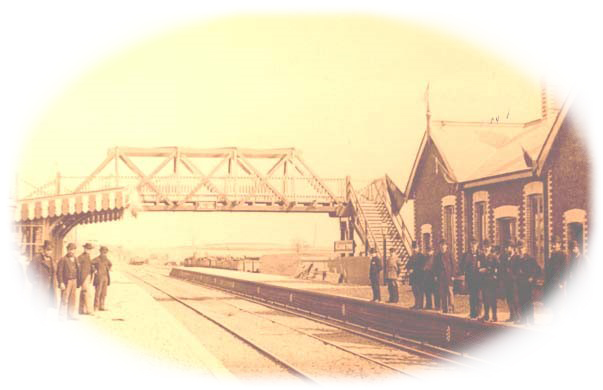 The main line, single for parts of its length, duplicated the cross-country facilities provided by the former Great Eastern lines and rationalisation led to the closure of the majority of the line in 1959. Many relics of the line still exist today, including the swing bridge at Sutton Bridge, dating from 1899 and still in use by traffic using the busy A17 trunk road. A small section of the line is still used by trains from Cromer to Sheringham and a further section has been preserved as the North Norfolk Railway between Sheringham and Holt which has recently been re-connected to the national network when the level crossing at Sheringham was reinstated.
The main line, single for parts of its length, duplicated the cross-country facilities provided by the former Great Eastern lines and rationalisation led to the closure of the majority of the line in 1959. Many relics of the line still exist today, including the swing bridge at Sutton Bridge, dating from 1899 and still in use by traffic using the busy A17 trunk road. A small section of the line is still used by trains from Cromer to Sheringham and a further section has been preserved as the North Norfolk Railway between Sheringham and Holt which has recently been re-connected to the national network when the level crossing at Sheringham was reinstated.
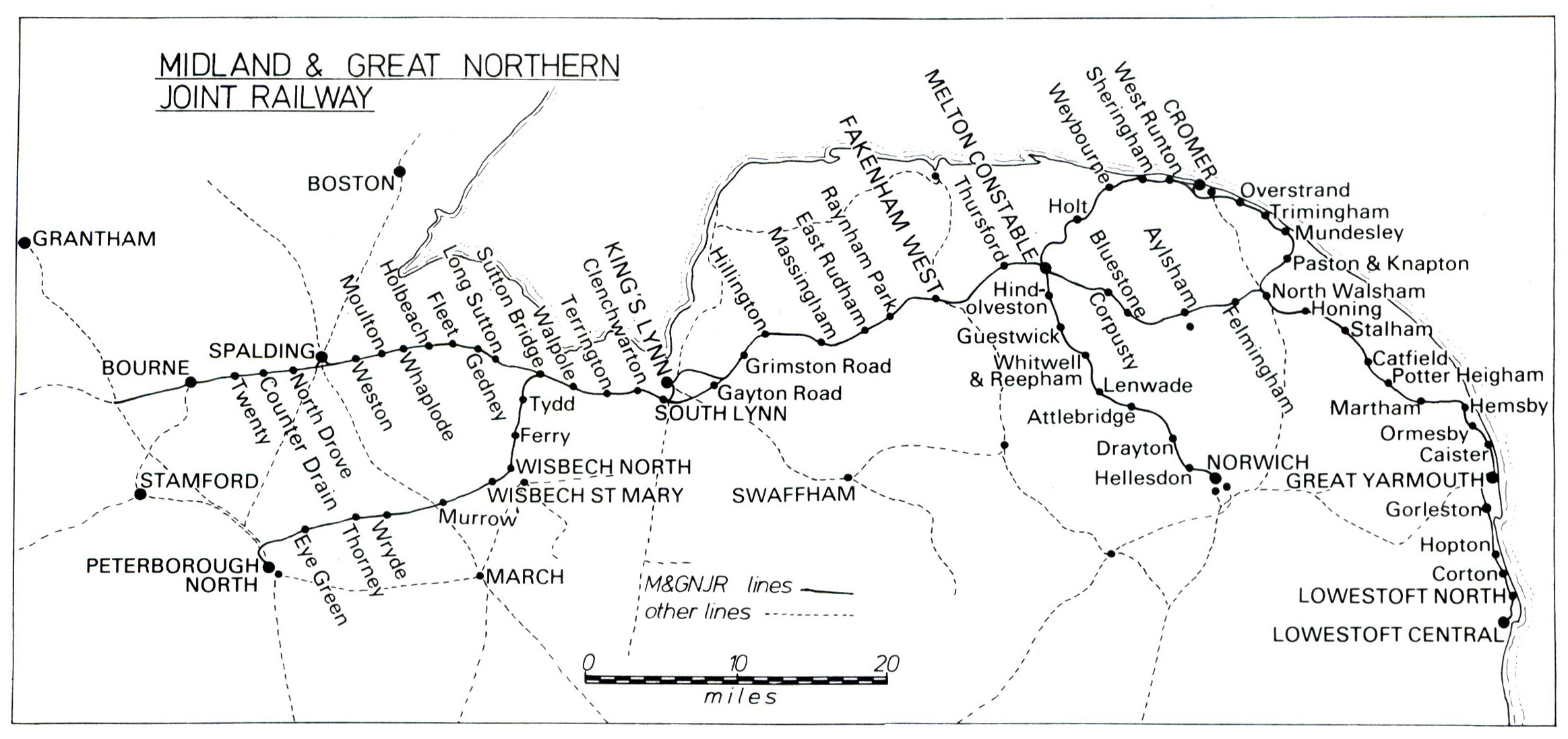
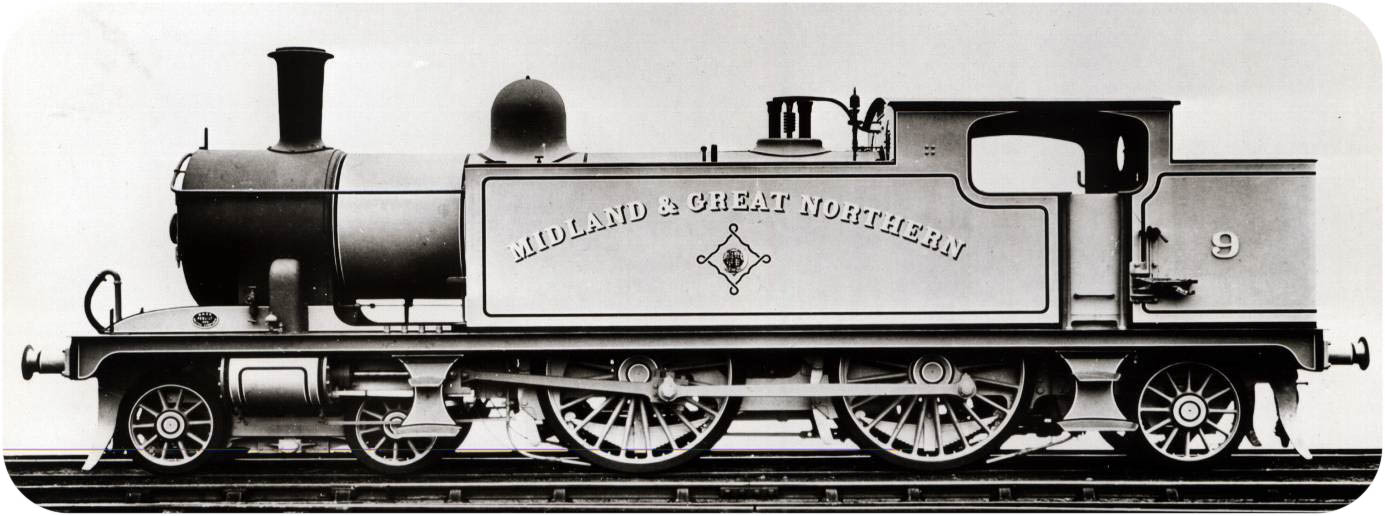
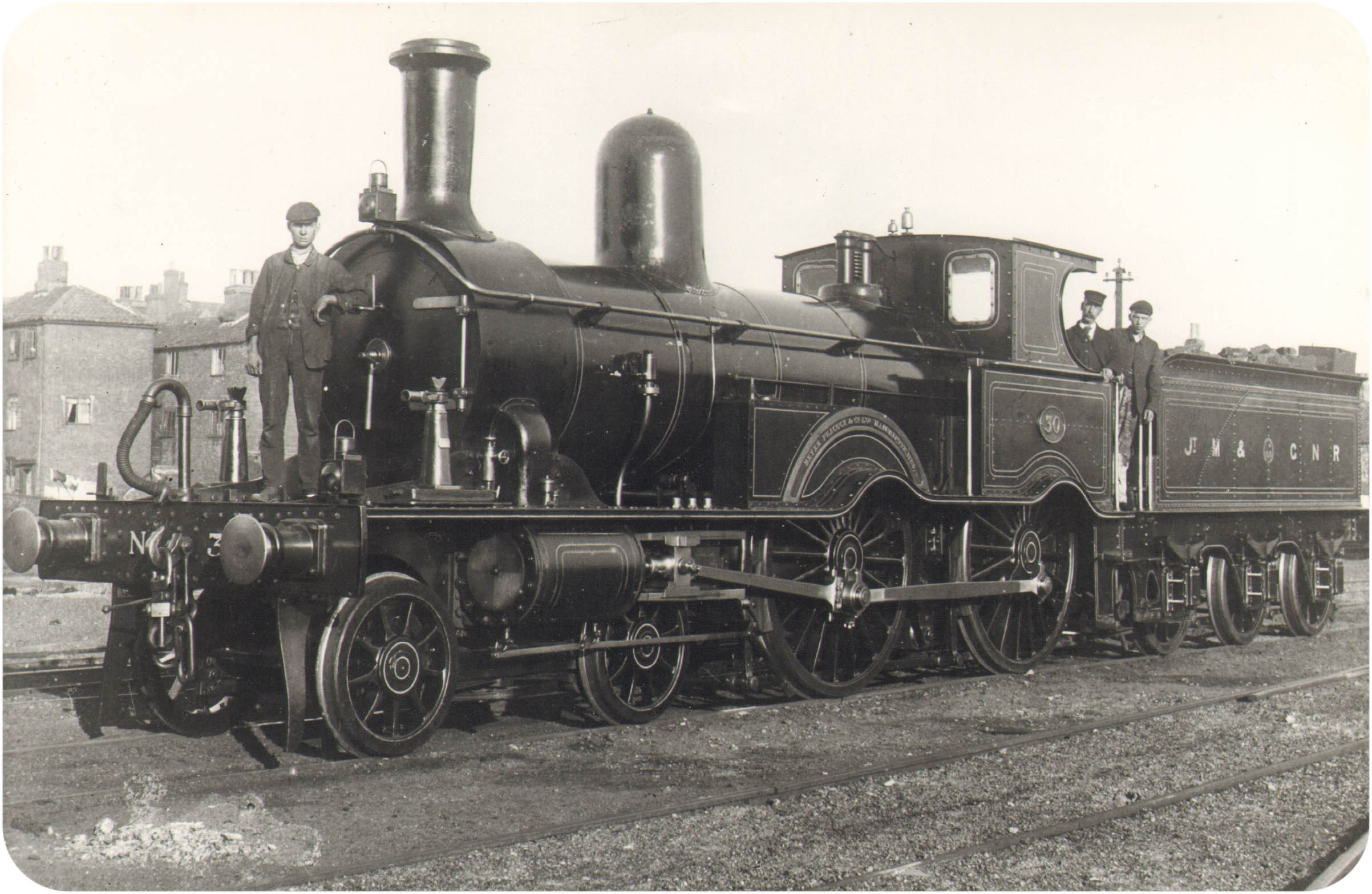
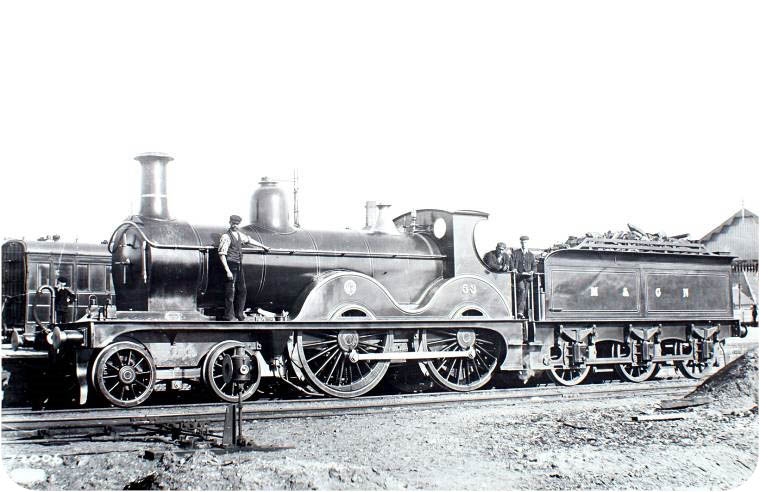 Shortages of motive power led Melton Constable to rebuild the Cornwall Minerals Railway locos into more useful shunting engines and to construct the three Class A tanks which were ideally suited to the local passenger services.
The grouping of 1923 saw little change initially but as M&GN locos were withdrawn locos from the parent companies took over. LMS 3P types were seen in the early 1930s but on takeover by the LNER in 1936 their types became prevalent. D9, D16 and J6 engines were all to be seen. From the late 1940s B12, J39 and J17 types came along and at nationalisation there was a partial return to LMS power in the form of the Ivatt Class 4MTs which ran the line until closure in 1959. The full story can be found in Bob Essery’s book listed in our bibliography.
Shortages of motive power led Melton Constable to rebuild the Cornwall Minerals Railway locos into more useful shunting engines and to construct the three Class A tanks which were ideally suited to the local passenger services.
The grouping of 1923 saw little change initially but as M&GN locos were withdrawn locos from the parent companies took over. LMS 3P types were seen in the early 1930s but on takeover by the LNER in 1936 their types became prevalent. D9, D16 and J6 engines were all to be seen. From the late 1940s B12, J39 and J17 types came along and at nationalisation there was a partial return to LMS power in the form of the Ivatt Class 4MTs which ran the line until closure in 1959. The full story can be found in Bob Essery’s book listed in our bibliography.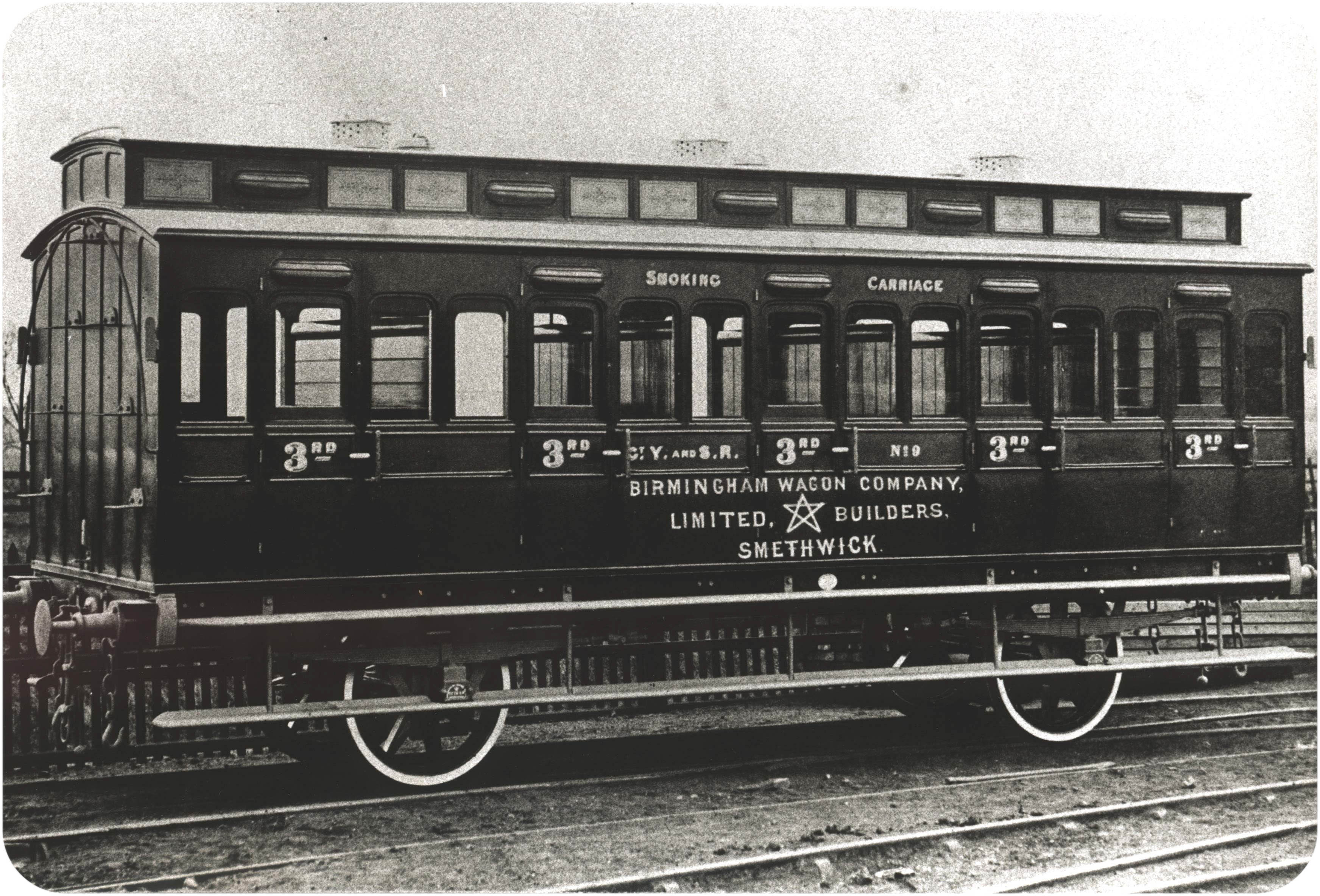
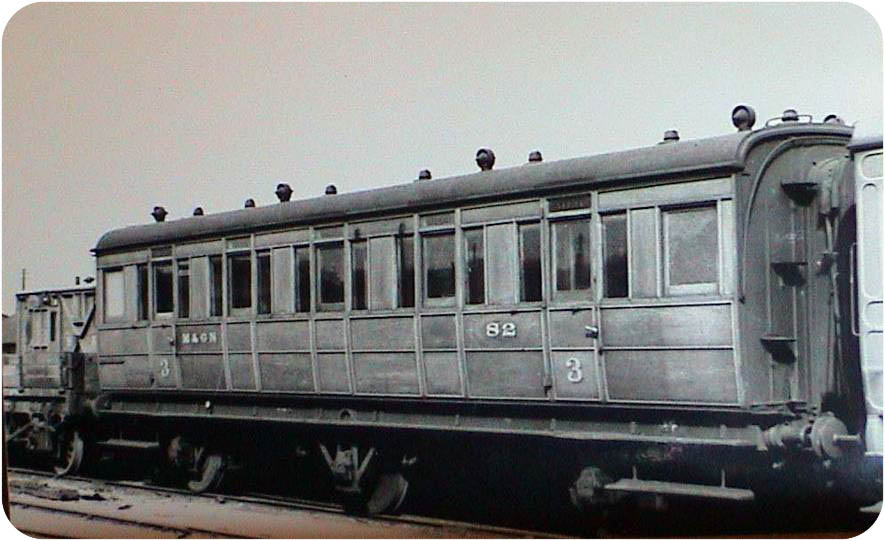 Once again, superannuated vehicles of Midland Railway, LNWR, NER and GER origins were placed on M&GN metals, giving the uneven roof lines of typical M&GN trains of the period. Many of these carriages stayed on the system until closure in 1959 although more standard LNER types were filling the gaps left by withdrawals. 1959 was not quite the end of the story for parts of the line remained open. Melton Constable was served by DMU services till 1964 and the section between Cromer and Sheringham still sees Classes 153, 155 and 170 units. Sheringham to Holt has been preserved and sees heritage trains which keep alive the atmosphere of the former M&GN. Find out more by visiting
Once again, superannuated vehicles of Midland Railway, LNWR, NER and GER origins were placed on M&GN metals, giving the uneven roof lines of typical M&GN trains of the period. Many of these carriages stayed on the system until closure in 1959 although more standard LNER types were filling the gaps left by withdrawals. 1959 was not quite the end of the story for parts of the line remained open. Melton Constable was served by DMU services till 1964 and the section between Cromer and Sheringham still sees Classes 153, 155 and 170 units. Sheringham to Holt has been preserved and sees heritage trains which keep alive the atmosphere of the former M&GN. Find out more by visiting 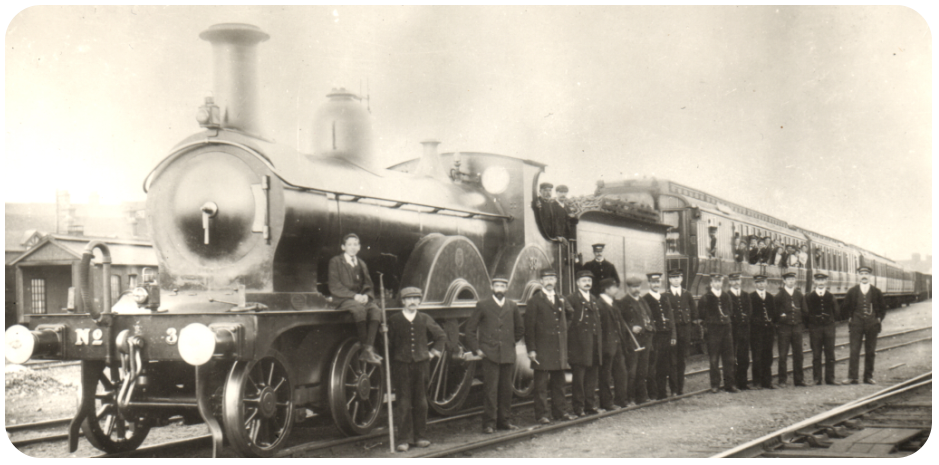
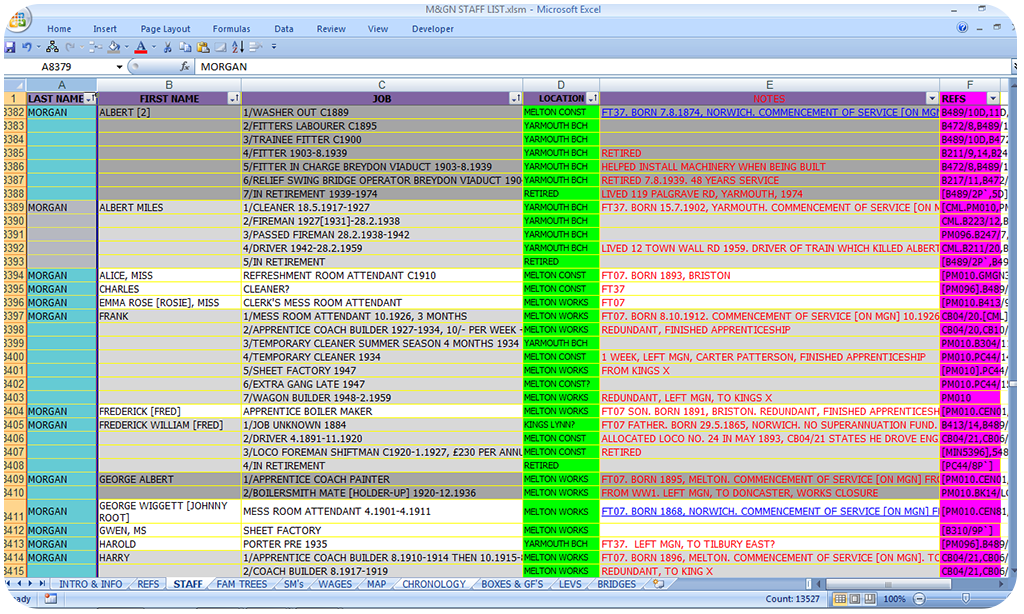
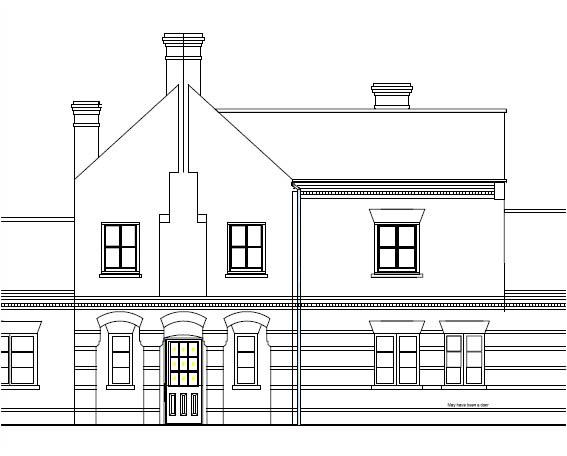 The various parts of the M&GN were built by different companies, each with its own style of architecture. The early lines such as the Great Yarmouth and Stalham Light Railway were characterised by simple ‘pavilion’ style buildings supplied by the contractors Wilkinson and Jarvis who built the line. The M&GN’s famous engineer, William Marriott, developed this style into a more substantial design with ornate bargeboards and finials in the days of the Eastern and Midlands Railway. In the west the station buildings were rather a mixture but a few were of architectural merit and are still in existence.
The various parts of the M&GN were built by different companies, each with its own style of architecture. The early lines such as the Great Yarmouth and Stalham Light Railway were characterised by simple ‘pavilion’ style buildings supplied by the contractors Wilkinson and Jarvis who built the line. The M&GN’s famous engineer, William Marriott, developed this style into a more substantial design with ornate bargeboards and finials in the days of the Eastern and Midlands Railway. In the west the station buildings were rather a mixture but a few were of architectural merit and are still in existence.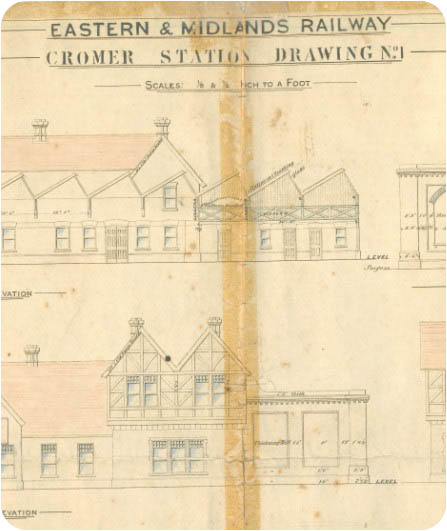 Norwich City which was destroyed in World War Two probably being the finest. Mundesley Station, on the Norfolk and Suffolk Joint line between Cromer and North Walsham shared some architectural characteristics with certain Great Eastern Railway stations such as Hertford East, hardly surprising as the Great Eastern Railway was the M&GN’s partner in the N & S Joint venture.
Norwich City which was destroyed in World War Two probably being the finest. Mundesley Station, on the Norfolk and Suffolk Joint line between Cromer and North Walsham shared some architectural characteristics with certain Great Eastern Railway stations such as Hertford East, hardly surprising as the Great Eastern Railway was the M&GN’s partner in the N & S Joint venture. The first signals seen on what was to become the M&GN were those installed by the Eastern and Midlands Railway. Later signalling equipment was provided by the Midland Railway and the Great Northern Railway with the majority being the Great Northern somersault pattern. At first these were mounted on simple wooden posts but from the early years of the 20th century they were mounted on posts made of Melton Reinforced Concrete like the one seen here at Melton West Junction. Midland Railway Acfield pattern signals were also used but mainly on the lines west of Lynn. The Midland Railway also supplied boxes of their pattern on the western part of the system while most of the others were more like Great Northern boxes. A few ‘unusual’ signalboxes could be seen such as the ‘pagoda’ design at Roughton Road Junction.
The first signals seen on what was to become the M&GN were those installed by the Eastern and Midlands Railway. Later signalling equipment was provided by the Midland Railway and the Great Northern Railway with the majority being the Great Northern somersault pattern. At first these were mounted on simple wooden posts but from the early years of the 20th century they were mounted on posts made of Melton Reinforced Concrete like the one seen here at Melton West Junction. Midland Railway Acfield pattern signals were also used but mainly on the lines west of Lynn. The Midland Railway also supplied boxes of their pattern on the western part of the system while most of the others were more like Great Northern boxes. A few ‘unusual’ signalboxes could be seen such as the ‘pagoda’ design at Roughton Road Junction.